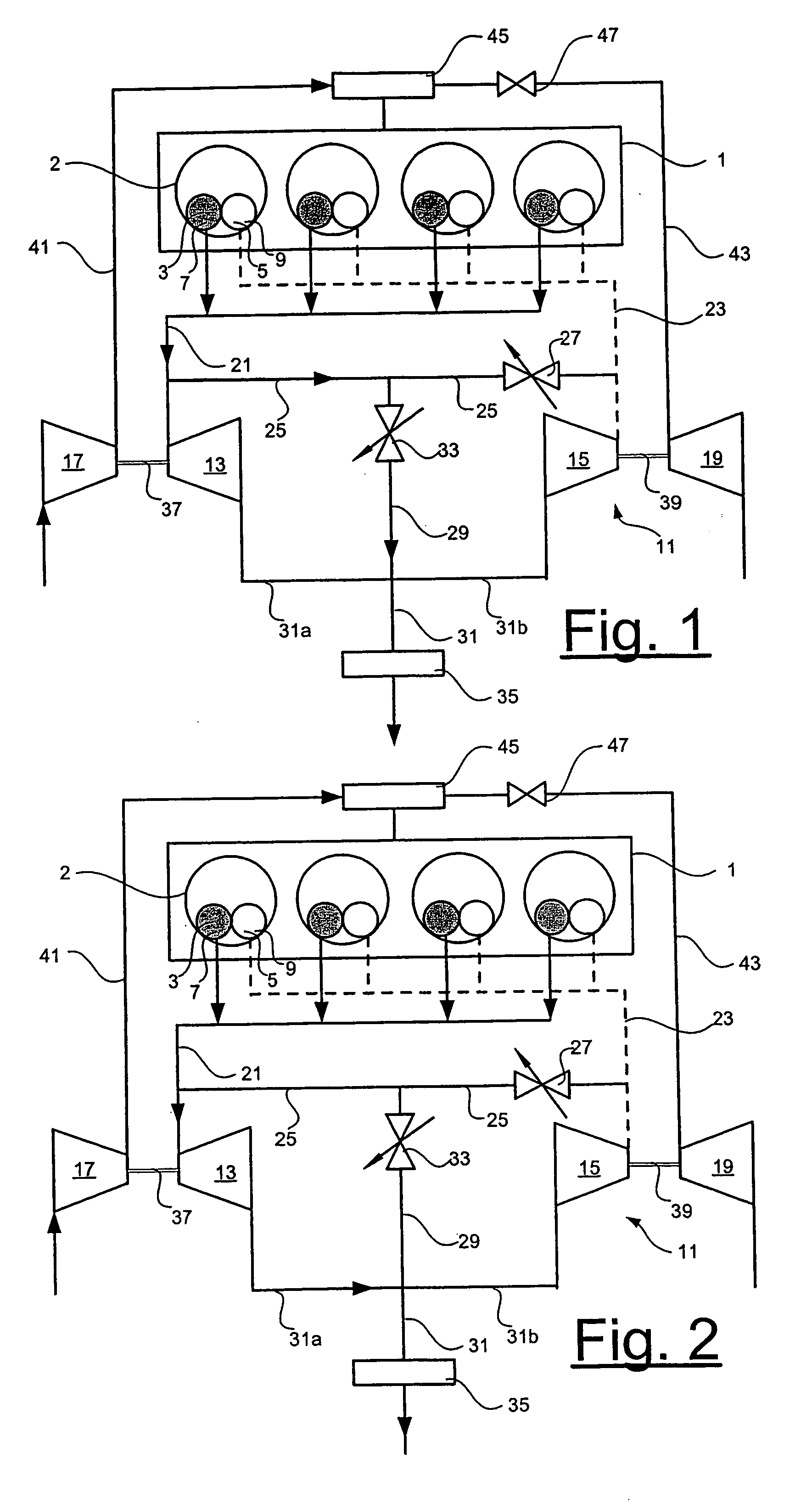Control of exhaust to a turbo of internal combustion engine
a technology of internal combustion engine and control valve, which is applied in the direction of electrical control, machines/engines, output power, etc., can solve the problems of uneven wear of the turbine, poor use of the energy contained in the exhaust gases, and longer for the catalytic converter to reach the working temperature, so as to reduce the back-pressure of the exhaust gas, and improve the efficiency of the engin
- Summary
- Abstract
- Description
- Claims
- Application Information
AI Technical Summary
Benefits of technology
Problems solved by technology
Method used
Image
Examples
Embodiment Construction
[0028]FIG. 1 shows a schematic representation of an internal combustion engine according to the invention. The internal combustion engine 1, a four-cylinder in-line engine, is equipped with a first and a second exhaust port 3, 5 for each cylinder 2. The first and second exhaust ports are provided with first and second exhaust valves 7, 9 respectively for opening and closing the exhaust ports during operation of the engine. The exhaust valves 7, 9 can be individually controlled independently of one another by either electromechanical, electrohydraulic or pneumatic means, such means of valve control being already known in the art, for which reason they will not be described in more detail. The opening and closing of the valves 7, 9 is preferably continuously adjustable, so that their lift / timing can be varied as a function of the current engine operating condition and relevant parameters, in order to permit a high performance of the internal combustion engine 1. This type of valve con...
PUM
 Login to View More
Login to View More Abstract
Description
Claims
Application Information
 Login to View More
Login to View More - R&D
- Intellectual Property
- Life Sciences
- Materials
- Tech Scout
- Unparalleled Data Quality
- Higher Quality Content
- 60% Fewer Hallucinations
Browse by: Latest US Patents, China's latest patents, Technical Efficacy Thesaurus, Application Domain, Technology Topic, Popular Technical Reports.
© 2025 PatSnap. All rights reserved.Legal|Privacy policy|Modern Slavery Act Transparency Statement|Sitemap|About US| Contact US: help@patsnap.com



